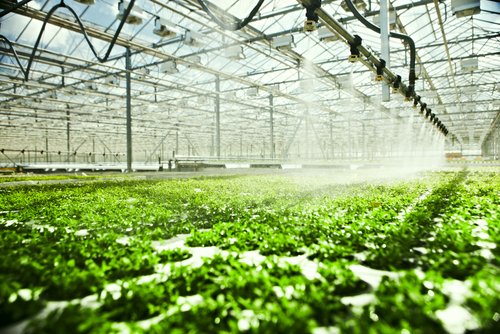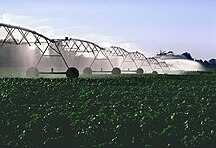WATER CONSERVATION ARE HARVESTING
WATER HARVESTING AND CONSERVATION
In many farming areas, readily available water is in short supply. Although the total annual rainfall in an area may be enough to sustain farm needs, it is often distributed very unevenly so that long dry periods are interspersed with periods of intense rainfall. In many cases, a crop is unable to use a high proportion of this water, as much of it is lost through run off or leaching. This may also cause soil erosion and loss of soil nutrients.

Principles of Water Harvesting and Conservation:
In deciding which techniques to use to make more efficient use of the available water, it is important to consider how crops receive or lose water. Crops receive water through rainfall, irrigation and stored soil water. They lose it through run off, evaporation and drainage. Some key principles on effective water management are:
Use rainwater effectively:
In many climates, rainfall is distributed unevenly in intense downpours that cannot be readily used by a crop. Storage techniques (such as external catchments or roof top collection) increase the availability of water in the drier seasons. They also harvest water from a wider area making more water available to the crop.

Make effective use of soil water reserves:
The soil stores water from rainfall providing a reserve that is available to the crop. How much water is available depends on the soil type and the rooting system of the crop. Sandy soils hold much less water than clay or silt soils, so crops will require watering more often.

Avoid wasting water through evaporation:
Water that evaporates directly from bare soil is wasteful as it is not being used for productive plant growth. It is desirable to maintain full ground cover for as much of the time as practically possible. Applying mulch to the soil will also reduce evaporation considerably. Use of drip irrigation and irrigating in the evening will also reduce the amount of water lost through evaporation.
Plan your irrigation:

Irrigation is one way of supplementing water from rainfall and soil reserves, but can waste large amounts of water if not used carefully. A key way of making the most of the water supply is to only irrigate when necessary. Many people irrigate on a regular basis whether the crop needs it or not. If water is scarce, irrigation should be restricted to the most critical periods such as germination and fruit set. Drip irrigation makes much better use of water than overhead systems as it is targeted to the roots rather than sprayed up into the air.
1. CONTOUR FARMING:
Contour farming refers to field activities such as ploughing and furrowing that are carried out along contours rather than up and down the slope. They conserve water by reducing surface run off and encouraging infiltration of water into the crop area.
1. 1 Contour Ploughing:
Ideally, any ploughing on a slope should be carried out along the contours rather than up and down as this reduces run off and soil erosion and increases moisture retention. Contour ploughing can be practised on any slope with a gradient less than 10%. On steeper slopes it should be combined with other measures such as terracing, bunds or strip cropping.
- Low-flow shower heads sometimes called energy-efficient shower heads as they also use less energy
- Low-flush toilets, composting toilets and incinerating toilets. Composting toilets have a dramatic impact in the developed world, as conventional Western flush toilets use large volumes of water
- Dual flush toilets include two buttons or handles to flush different levels of water. Dual flush toilets use up to 67% less water than conventional toilets
- Faucet aerators, which break water flow into fine droplets to maintain "wetting effectiveness" while using less water. An additional benefit is that they reduce splashing while washing hands and dishes
- Raw water flushing where toilets use sea water or non-purified water (i.e. greywater)
- Wastewater reuse or recycling systems, allowing:
- Reuse of graywater for flushing toilets or watering gardens
- Recycling of wastewater through purification at a water treatment plant. See also Wastewater - Reuse
- Rainwater harvesting
- High-efficiency clothes washers
- Weather-based irrigation controllers
- Garden hose nozzles that shut off the water when it is not being used, instead of letting a hose run.
- Low flow taps in wash basins
Commercial applications:
Many water-saving devices (such as low-flush toilets) that are useful in homes can also be useful for business water saving. Other water-saving technology for businesses includes:
- Waterless urinals (also can be installed in schools)
- Waterless car washes
- Infrared or foot-operated taps, which can save water by using short bursts of water for rinsing in a kitchen or bathroom
- Pressurized waterbrooms, which can be used instead of a hose to clean sidewalks
- X-ray film processor re-circulation systems
- Cooling tower conductivity controllers
- Water-saving steam sterilizers, for use in hospitals and health care facilities
- Rain water harvesting
- Water to Water heat exchangers.
Agricultural applications:
Water is an essential part of irrigation. Plants always take a lot of ground water thus ground water should bereplenished. For crop irrigation, optimal water efficiency means minimizing losses due to evaporation, runoff or subsurface drainage while maximizing productionAn evaporation pan in combination with specific crop correction factors can be used to determine how much water is needed to satisfy plant requirements. Flood irrigation, the oldest and most common type, is often very uneven in distribution, as parts of a field may receive excess water in order to deliver sufficient quantities to other parts. Overhead irrigation, using center-pivot or lateral-moving sprinklers, has the potential for a much more equal and controlled distribution pattern. Drip irrigation is the most expensive and least-used type, but offers the ability to deliver water to plant roots with minimal losses.
Wasting of water:
Wasting of water is the flip side of water conservation and, in household applications, it means causing or permitting discharge of water without any practical purpose. Inefficient water use is also considered wasteful. By EPA estimate, household leaks in the US can waste approximately 900 billion gallons (3.4 billion cubic meters) of water annually nationwide. Generally, water management agencies are reluctant or unwilling to give a concrete definition to a relatively vague concept of water waste.
Sources of water
About 97% of the water on earth is found in oceans and seas, and the remaining 3% comes from other water bodies such as lakes, rivers, ponds, etc. Besides, some amount of water is also present in the air.
Conclusion
Harvesting and collection of rainwater is an adequate strategy that can be used to address the problem of water crisis globally. The use of a rainwater harvesting system provides excellent merits for every community. This simple water conservation method can be a boost to an incredible solution in areas where there is enough rainfall but not enough supply of groundwater. It will not only provide the most sustainable and efficient means of water management but also unlock the vista of several other economic activities leading to the Empowerment of people at the grass-root level.


Comments
Post a Comment